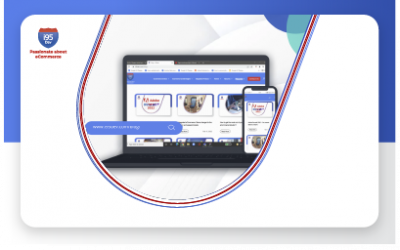Product Catalog Management:
All you need to know

Merchants who understand the key to an excellent online presence often maintain a good product catalog. In today’s online world, customers are hungry for information. Most of the time, though products are available on multiple sites, customers tend to choose websites where they experience seamless navigation while browsing for products and information.
Although there are several other brands offering similar products, shoppers often seem to choose to shop from Amazon or eBay. And, this is because these brands feed in enough information for customers to make the purchase decisions easier.
Many new eCommerce merchants tend to lose out on maintaining a good product catalog mostly due to lack of understanding of its importance. This is not a good practice, as it not only reflects poorly on the storefront but also takes a toll on the overall profitability.
This blog talks about product catalog management challenges and how to overcome them efficiently.
Challenges in managing product catalog
Product catalog management for eCommerce is meant to simplify businesses; however, it is a task in itself. Hence many merchants are tangled in keeping a sorted product catalog for all SKU’s.
Variety in product types
Product catalog management becomes even more complicated when there are a number of product types with a wide variety and specifications, combo’s, etc. For example, the same apparel in different sizes and colors should be managed with separate SKU’s across various sales channels. Most of the time, products have parent-child relationships where the child products sit under the parent product and are also treated as individuals.
Selling on multiple channels
Selling on multiple sales channels and marketplaces like Amazon and eBay is another challenge for maintaining a good product catalog. Every sales channel has its own format of recording product data for listings. If not done right, you may end-up posting either incomplete or wrong information, which is a disaster on such huge platforms with hundreds of competitors just a click away!
Specific Pricing
Specific pricing features are a must-have today, especially customer-specific pricing. Setting different pricing for multiple customer groups, customer types depending upon factors like customer loyalty, first-time users, etc., is chaotic while maintaining a product catalog. In B2B business, it can be a severe issue as every customer pricing can be different depending upon the quantity purchased.
Re-entering supplier product data
All merchants receive data from the suppliers, which is not identical to your format. Though you quite understand what those codes mean, you simply can’t put it as-is in your product catalog. Further, it consumes time and energy to put this data in your format.
Have you faced similar challenges? Yes? Now let’s see how to get it right!
Best Practices for Product Catalog Management
Rule 1: Choose the right tool
Above all, choosing the right tool does more than half of your work. In the early stage of business, merchants often start maintaining product data in an Excel sheet. This works well when you have limited SKU’s, but as your business grows, it becomes challenging to manage it without a proper tool in place.
The best practice for this problem is to switch to an ERP system. ERP systems like Microsoft Dynamics 365 Business Central, Finance & Operations, Dynamics NAV, GP, AX, etc. ERP systems will not only help you in maintaining product data but will also enrich your business in every way possible. Learn more about ERP systems…..
Also, widely used systems like PIM (Product Information Management) are meant for maintaining product data in a structured format.
You may also like: 18 Crucial Reasons You Should Integrate ERP & eCommerce
Rule 2: Integration with eStore
Again, just the usage of product data management tools is not enough. Merchants often misunderstand that having these tools will do the job. But the reality is, integration between your eStore and ERP/PIM/or other tools is essential.
Without integration between your eStore and other tools, they are just separate systems functioning in silos, which still need time and effort to get things right.
What happens when you don’t integrate tools with your eStore?
We have witnessed cases where businesses have all the necessary tools in usage but still lack the desired efficiency, productivity, and success. A simple answer to this is INTEGRATION or implementing an INTEGRATED SOLUTION.
Even though businesses use other supporting tools or just an ERP with their eStore, companies fail to project and deliver the desired customer experience online. There are issues like lack of productivity, too much manual work, errors, long sales cycles, latency in fulfillment, etc. The list can go on….
You may also like: How integrated eCommerce benefits retailers and wholesalers?
Closing thoughts
If you are not using a product management tool yet, you should definitely go for one; at the same time, today’s ERP systems are already equipped with high data management capabilities. The next most crucial step is to have an integrated solution implemented for your eCommerce business.
Wondering where to start? Well, answers to all your questions are just a click away! Contact us now; we will be more than happy to assist you!
Recent Blogs
22 benefits ecommerce home decor furniture businesses
22 Benefits of eCommerce for Home Décor and Furniture Businesses Author Category Share Home décor and furniture businesses are increasingly turning to eCommerce to elevate their operations...
Home Improvement Industry: 11 Key eCommerce Features Consider
Elevating Home Improvement eCommerce: 11 Must-Have Features for a Seamless Shopping Experience Author Category Share In the dynamic landscape of home improvement, furniture, and lifestyle,...
Complete Guide to Automotive eCommerce Growth, Trends, Challenges, Solutions
A Comprehensive Guide to Accelerate Your Automotive Business Growth with eCommerce Author Category Share Introduction The automotive industry has undergone a significant transformation in...



